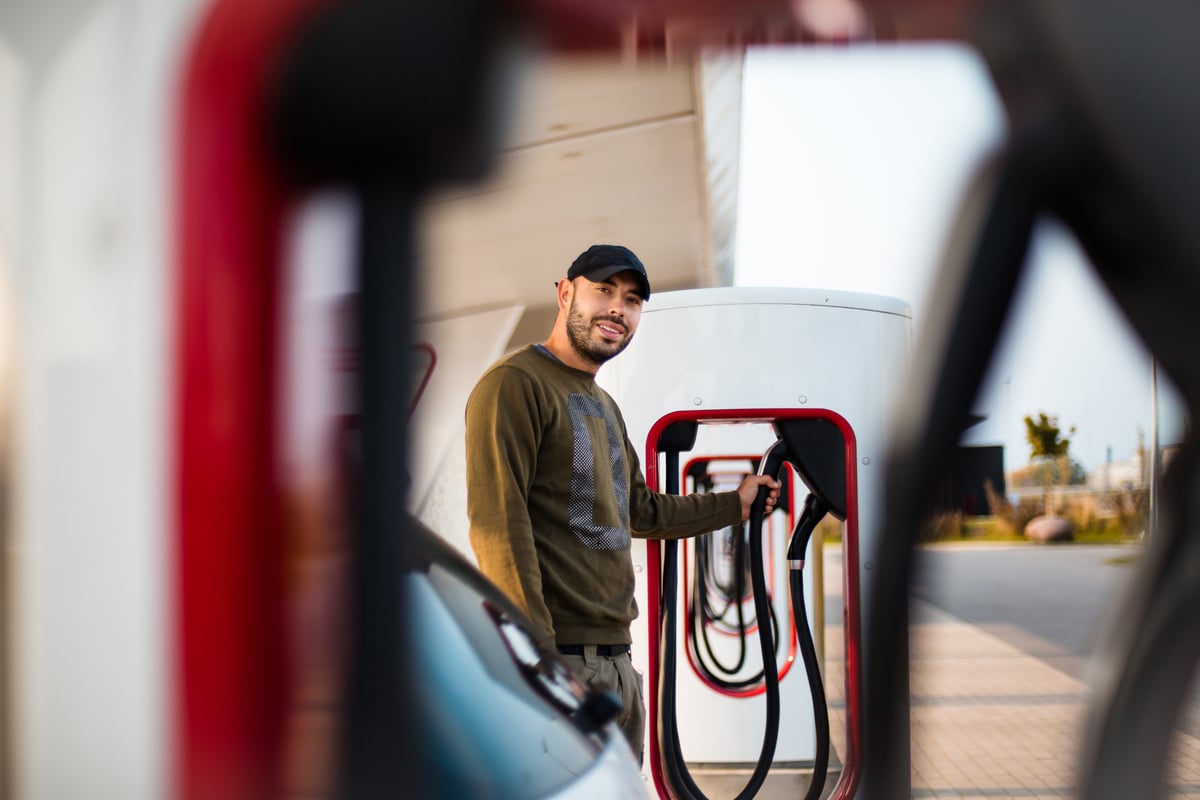A number of recent reports on electric-car maker Tesla Motors (TSLA +3.15%) serve as excellent examples of key differences between the shortsighted media and the long-term minded buy-and-hold investors. On three particular Tesla topics that often make headlines, the media appears to be somewhat clueless.

Model S outside of the entrance to Tesla's headquarters in Palo Alto, Calif. Image source: Tesla Motors
Battery fires
Over the 4th of July weekend, a stolen Tesla ended a run from the police in an accident, reportedly driving 100 miles an hour. The Model S was split in two and the battery went into flames. Similar to the market reaction to previous fires, the stock sold off meaningfully on Monday, closing with a 3% loss (though it's worth noting that the stock is up about 49%, year to date).
There's no merit for any market reaction to an accident like this, period. In March, Tesla CEO Elon Musk said the "odds of a fire in a Model S, at roughly 1 in 8,000 vehicles, are five times lower than those of an average gasoline car and, when a fire does occur, the actual combustion potential is comparatively small." Even with the most recent fire, this statistic has likely improved since then.
For long-term investors, the overall safety, and lack of fires or explosions for the Model S is evidence that electric cars can offer a greater safety profile than their internal combustion engine peers.
Quarterly nonsense
Going into every Tesla quarterly earnings report, there's discussion about how the company may miss guidance. But the credibility of such speculation amounts to nil.
While it's always possible that Tesla could miss guidance, it is unlikely. Further, Tesla's deliveries in the short-term play almost zero role in the company's potential to become a mass-market player.

Tesla's Fremont, Calif., factory. Image source: Tesla Motors
How is missed guidance unlikely? First, management has considerable vision into the next quarter when it reports guidance. This gives Tesla's quarterly delivery forecasts great credibility. When Tesla reported first-quarter results, for instance, it was just a week away from the halfway point of Q2. Second, as a supply limited company, Tesla said it had already sold out of second-quarter production. Finally, Tesla has visibility into "the growing pipeline of in-transit cars to Asia and Europe."
Over the long haul, however, quarterly deliveries are just a rounding error compared to what Tesla wants to accomplish with the help of its Model X and a more affordable electric car. Instead of focusing on quarterly deliveries, long-term investors know that the most important story for Tesla is its plans related to its game-changing pipeline of vehicles.
Demand
But even if Tesla missed quarterly guidance, it would simply signal a short-term blip in production, having nothing to do with demand. The media has repeatedly confused Tesla's deliveries with demand. Thinking this way can lead to the false conclusion that demand in North America has peaked, simply because North American deliveries didn't grow sequentially in recent quarters.

Model S. Image source: Tesla Motors
But it's Tesla's orders that speak about demand for this supply limited company -- not deliveries. While Tesla doesn't always speak up regarding orders, it did say in the first quarter letter to shareholders that there was "a significant sequential increase in worldwide net orders for the Model S." Specifically for North America? Net orders grew sequentially by more than 10%, Tesla said.
Those following Tesla stock should stay focused on net orders, the Gigafactory that will build batteries for Tesla's planned affordable car, and Tesla's vehicle pipeline. Model S battery fires, this quarter's deliveries, and quarterly demand speculation offer no insight into the big picture for the stock. And for a stock like Tesla with wild growth priced into the stock, it's the big picture that matters.






